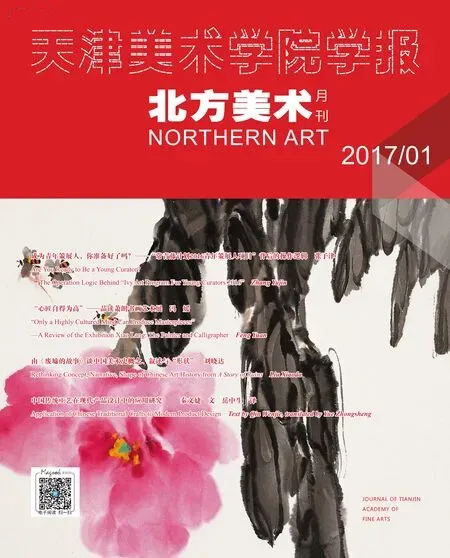中国传统工艺在现代产品设计中的应用研究
秦文婕 文 岳中生 译 /Text by Qin Wenjie, translated by Yue Zhongsheng
传统工艺是人类为满足自身物质和精神需要,采用各种物质材料和手工技艺,通过不断实践和经验积累,以世代相传的方式保留下来的技术及其相适应活动的总称。传统工艺是人类共同的财富,是人类文明一个重要的组成部分,它不仅可以具体且鲜明地反映一个民族的历史和文化,而且在现代社会中依然具有无法取代的实际价值和现实意义。
一、建立中国传统工艺的研究体系
走近它,才发现,中国传统工艺是一个非常庞杂的系统,为了较为系统地研究中国传统工艺,理清思路和方法,从更完整的范畴内搜寻线索,在整个研究过程中不会混乱或疏漏太多,笔者设计了一个中国传统工艺研究路径,全面立体地建构一个有关传统工艺研究的系统概念(图1)。
第一,时间线索,传统工艺有着一个很长的时间脉络,甚至可以追溯到祖先在史前社会的造物行为,如在中国境内发现的史前印纹陶上就已经证实了人类最早编织技术的存在。沿着时间线索可以逐步严谨地整理各个时间节点上传统工艺的成果及其背景资料。

图1 中国传统工艺研究路径Fig. 1 Path of research of Chinese traditional crafts

图2 建立中国传统工艺立体研究结构Fig. 2 Building a solid research structure of Chinese traditional crafts
第二,空间线索,传统工艺同样有着一个很大的空间脉络,这里的空间是指地域或地区的概念。任何国家或民族的传统工艺的形成和发展都与其地域条件和特点有着紧密的联系,是各具特色的风土人情孕育出了千差万别的工艺技巧,绝大多数的传统工艺都包含着丰富的地域性知识。所以说,只有在某一工艺和其“出生地”之间相互探析,才能理解和把握这一技巧的真谛,从中更深入地挖掘现代设计可应用的价值。
第三,种类线索,传统工艺种类繁多,涉及的领域几乎遍及社会生活的各个方面,可以说,有着一个极为广泛的应用脉络。以往的研究工作多站在研究者自己的领域内,视线相对单一,思路相对保守,在对民众宣传中也容易造成狭隘的理解。
第四,技艺线索,技与艺的融合示意着工艺本身从低级走向高级,也包含着在特定历史时期,不同阶级、不同等级、不同形式等等的各色技艺品类,具有相对分散、杂乱和繁复的特点,需要从不同的认知视角去收集、确定和管理。
需要强调的是,中国传统工艺是一个庞大的待研究开发的复杂系统,本文把其研究分为时间线索、地域线索、种类线索和技艺线索。这些线索的路径既有连续性又有间断性,与社会人文变迁、科学技术变革、经济制度变更等等社会生活的各个方面都有着深刻的联系。同时,以上四个线索,还都有着各自的细化坐标,建立这样一个框架体系,可以更清
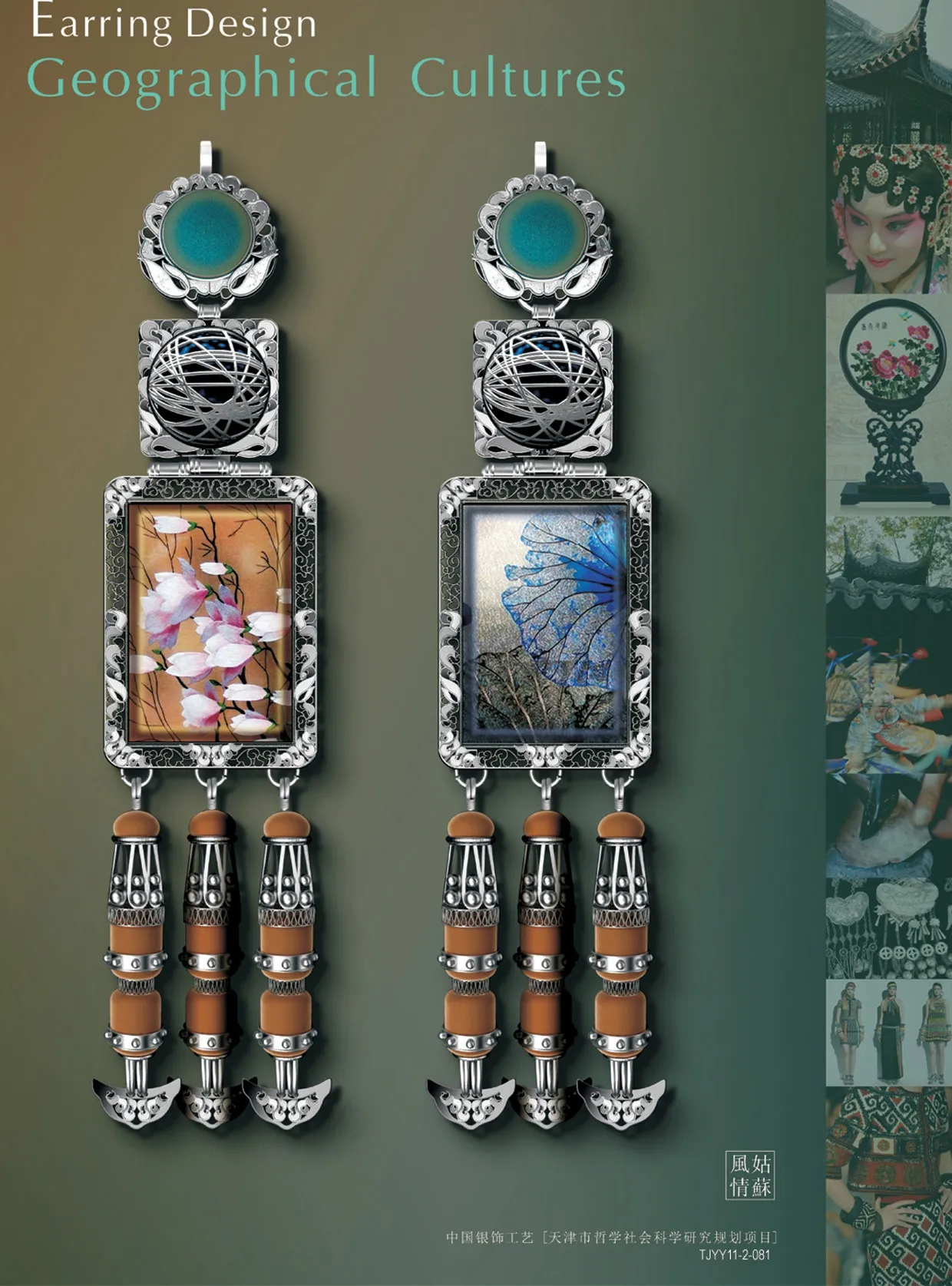
图3 银饰工艺首饰设计 秦文婕作品Fig. 3 Silver jewelry, designer∶ Qin Wenjie
晰地建立一个全面立体的系统概念,帮助我们挖掘、发现中国传统工艺中更具价值的研发课题,从而更清晰有效地应用到现代相关设计领域中。
二、多维度概念中的中国传统工艺与现代设计的关系
史料证实,人类在不同时期、不同国度或不同区域内,由于客观自然条件的差异与限制,逐渐形成了各具不同特征的人类文明进程。中国是世界上最古老和最具影响的人类文明发源地之一,也是世界上绵延不断时间最长的文明之一。作为这一古老文明的重要组成部分,中国的传统工艺有着众多的世界之最和相当丰厚的资源。通过多维度概念和现代设计与制造进行对比、嫁接以及相互感染,从中国物质技术发展的实用特性到人文观念中,反思现代产品设计和社会可持续发展的综合诉求。
第一,时间概念是一条可以依据的客观线索。根据每一个时间节点,通过各个历史时期(年代更替)来梳理中国传统工艺的演变,或者也可以说是对中国技术发展从单一到多元、从简单型到复合型、从低端技术到高精尖技术的地毯式搜索。此时,时间的概念与相对应的社会经济、文化、政治等背景紧密相连,相互作用,这种规律直到当代依然如此。从时间维度看,中国传统工艺的成就可以穿越漫长的历史长河,如较为典型的距今7000年前的河姆渡文化遗址中的中国式干栏结构建筑,已经具备了榫卯等木作高级工艺;距今2000多年前让古罗马凯撒大帝如醉如痴、让西方帝国无数贵族目眩神迷的美纹丝织工艺……其中,榫卯与丝织工艺在
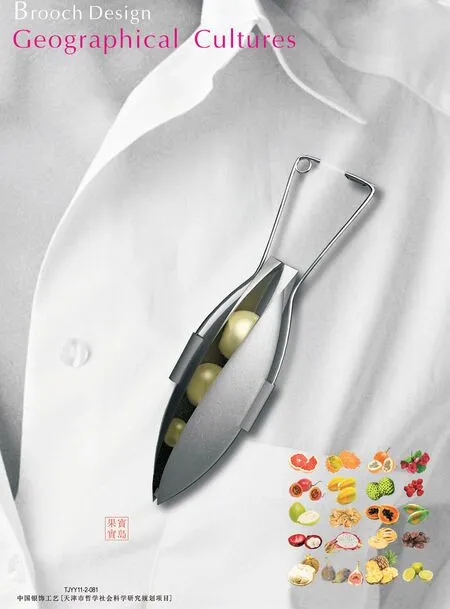
图5 银饰工艺首饰设计 秦文婕作品Fig. 5 Silver jewelry, designer∶ Qin Wenjie

图6 银饰工艺首饰设计 秦文婕作品Fig. 6 Silver jewelry, designer∶ Qin Wenjie
现代生活中依然有着各式变体,其主要技艺核心的基础范式依然保留着。
第二,空间概念是另一条具有鲜明特色的客观线索。空间即指地域分布,中国各个不同区域由于所处的地理位置不同,决定了气候、自然物产以及生活习俗等等方面的差异,也直接投射出相应具有物理、人理、事理所支撑的工艺技术。从空间维度看,中国是一个幅员辽阔且有着56个民族的大国,由于历史和现实诸多方面的原因,各地区和各民族产生了各具特色的传统工艺。如:北京的绢花和景泰蓝,天津的泥人张彩塑和杨柳青年画,上海的顾绣和嘉定黄草编,安徽的徽州三雕和芜湖铁画,广东的彩瓷和象牙雕,台湾的油纸伞和莺歌陶器……再如:壮族造纸和壮锦,苗族蜡染和水碾,侗族建筑和服饰,毛南族竹编,瑶族医药……由此,创造出了中华民族绚烂多彩的物质文明。直至今日,各地的这些传统工艺依然作为地区独有的特色产物,只是其中很多技艺长时间保持着相对原始的样貌,逐渐与现代生活内容及文化脱节而被边缘化。
第三,种类概念。从系统的角度分析,中国传统工艺的种类繁多,庞杂交错,用现代观念表述,是一个跨学科和跨领域的范畴。由于研究领域发展的不平衡,容易造成以偏概全,忽略中国传统工艺所包含的全景信息。故此,我们可以尝试从材料路径上归纳,细分为:木作工艺、石作工艺、漆作工艺、纸作工艺、金属工艺……从行业路径上可指向农业、制造业、建筑业等等(如种植、制盐、榨油、兵器、礼器、
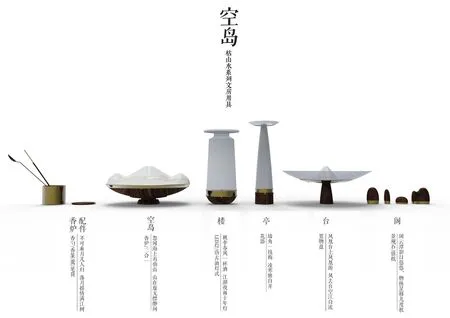
图7 文房用具设计 天津美术学院孙梓桐作品 指导教师秦文婕Fig. 7 Stationery of the study, designer∶ Sun Zitong, Tianjin Academy of Fine Arts, supervisor∶ Qin Wenjie
砖瓦、烛、染色、火药、硫黄、采煤、机械、水利等工艺);从学科路径上还可涉及冶金学、建筑学、力学、化学、声学等等方面的知识和经验总结。这样,便于研究者从中发现某一具体课题在不同路径中是否存在相互联系和多角度聚集优化的可能,也有助于研究者在现代技术信息和事物发展理念中大胆借鉴,进行跨界实验。
第四,技艺概念。从专业研究角度看,我们常会利用史料记载的内容了解学习一些传统技艺的方法和技巧,如织绣、编结、扎糊、刻印、绘画等等。但是,中国古代在长时期的重道不重器的文化氛围中,对器物的重视程度一直远不如其他文化,器物制作被视为不登大雅之堂的雕虫小技。因此专门记述传统工艺的古代文献非常少,只有《周礼·冬官考工记》《天工开物》《梦溪笔谈》《农书》《清代匠作则例》等数种而已。为了能使中国的传统工艺不止步于现代技术的围困,并延续光彩,很多业界的人士积极开展了相关的科学考古和田野调查,挽救了很多濒于失传的技艺,还发现了史料中未曾记载过的大量的民间工艺(也有称作乡土手工艺),而今
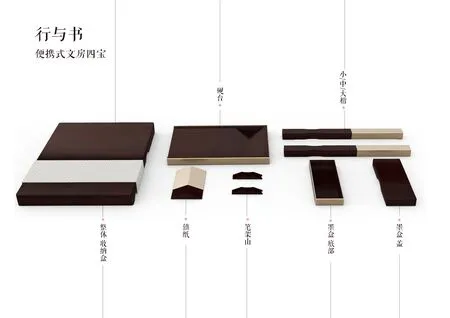
图8 新文房四宝设计 天津美术学院孙梓桐作品 指导教师秦文婕Fig. 8 Neo-four stationery treasures of the study, designer∶ Sun Zitong, Tianjin Academy of Fine Arts,supervisor∶ Qin Wenjie
天散落民间的这些技艺仍可以被我们看到,足以证明它们具有旺盛的生命力和真实生活中被需求的隶属关系。
以上这四个主要研究线索是从不同思路出发,探索中国传统工艺的技术、特点、文化属性及发展过程,它们之间是相通的,既可以横向相融,也可以纵向交叉。如果说时间线索是时间维度,地域线索是空间维度,那么,种类线索和技艺线索暂且可称为“人间维度”(工艺的种类和技艺都离不开为人服务),三个维度建构出了一个研究中国传统工艺的立体形态(图2),对我们今后全面认知把握、研究和实际应用都有较强的现实意义和指导作用。
三、中国传统工艺在现代产品设计中的应用价值
中国传统工艺的研究在当代的重视程度已经达到一个历史高位,从政府科研院所到民间团体、企业再到相关个体,关注的力度呈上升趋势。然而多数的主题工作倾向于在中国传统工艺本身固有的领域内,明显集中在某些主流技艺中,不能以一种理性的方式让传统工艺更多的积极因素有效地参与到现代设计进程中,间接地造成对传统工艺的描述被认知为保守、单一和落后,形成僵死的、概念化、脸谱化的社会认同趋势。
然而,提到现代化的产品设计,人们一般很快联想到的是精密的机械设计、时尚的外观设计和多功能的人性化需求,或者是如何制造高端奢华产品、如何标榜品牌效应、如何打造出奇卖点等等,几乎所有来自产品输出的竞争胜负最终被归结在商家收益多少上。经济发展别无选择地成为维系社会认同的唯一纽带,以经济的名义,把人类技术要义和设计本质有意无意地忽略和遮蔽了,而传统的宝贵资源正消逝在现代文化土壤中,传统技艺也无可选择地走向被埋入历史深层的命运。
打破僵局,需要重新建立认知体系。中国传统工艺所辐射的疆界应该尽可能全面地被挖掘整理出来以纳入中国技术发展史中,并与现代设计技术充分结合发酵。就技术本身而言,在一个多世纪的相持中,以手工为代表的传统工艺生产和以机器为代表的现代大工业制造之间从相遇、排斥到分离是一个必经的发展程序。在技术革新、经济发展和社会生活演变方面的逐渐对照与映射中,体现出随着人类科技水平不断飞跃发展,对强烈情感化和人文情怀的诉求就越需要跟进与补充,传统工艺与现代工业也应该越发显现出无法相互替代的作用和影响,并可以通过再度联手,打造未来新技术的软硬实力,相互启发,相互借鉴,向着更开放的领域尝试拓展(图3—图8)。
此外,从维系国人集体归属和终极意义的角度看,市场经济将大量社会成员抛到一个单纯利益链条中。原子化时代的公共治理迫切需要道德存量来帮助社会维系运转、资源动员和政策实施,而现实中传统文化是最具有社会认同的功能,传统工艺又是传统文化中的重要组成部分,赋予了自身文化纽带、文化支撑、文化乡愁、文化生态等精神归属的符号性和分量感。
最后,一个民族需要有在现代市场经济蓬勃发展中把控道德信仰和社会责任的自我约束能力。围绕人类社会伦理问题,涉及现代技术过度开发、欲望无限膨胀、价值观念沦陷、自然生态失衡等等现象,我们更需要将中国传统造物朴实的理念重新植入现代产品设计中,从正向引导基于广义的普适性的智慧生活。传统工艺在今天的社会生活中,其实不仅仅意味着是技能、技艺或技巧的知识,我们更应该看到它背后所凝结的深邃的生活本质和传达的大美的平淡境界。
四、结论
当代,我们有关中国传统工艺的研究不应仅仅停留在挽救濒临失传或消失的技艺这样单一的工作内容了。尽管这项工作仍然任重而道远,我们还是可以通过这些年各方面工作经验积累,建立更科学的系统研究方法和管理手段,更有的放矢地推进各个实施环节。然而,当面对中国传统工艺中越来越多地被挖掘出各种丰富的有形和无形文化资源和价值时,我们应该快速地着手去研究如何真正使它在这个时代和更长远的未来可以适应真实生活中的各种转变,探索如何让它们不再牵强地、孤立地出现在众人面前,如何如它们过往一样,成为人们日常离不开的,并且十分欣悦接受的生活之需,如何可以再次使它们走向更宽广的舞台,走进世人的惊喜中。
Traditional crafts are a general term involving technologies which are obtained by humans through continual practice and experience and are passed down from generation to generation, and corresponding activities to satisfy their material and spiritual needs with a variety of materials and manual skills. They belong to mankind’s common treasures, which, as an important part of human civilization, clearly ref l ect a nation’s history and culture, and are of irreplaceable, actual value and relevance to modern society.
I. Setting up a research system of Chinese traditional crafts
A closer look at Chinese traditional crafts shows that they are,actually, a multifarious and disorderly system. To fully study them and clarify on thinking and methodology, the author has devised a path of research to build a systematic concept concerning the crafts in a comprehensive manner (Fig. 1) so as to seek clues within a broader scope and avoid confusion or omission at the same time.
First, chronology as a clue. Any traditional craft has an extremely long timeline, which may even date from human ancestors’ act of making products in the prehistoric era. A case in point is the stamped prehistoric pottery discovered in China, which proves the existence of the earliest knitting technology ever. Following a chronological clue, we can accurately summarize the achievements of traditional crafts at various nodes of time step by step, and gather background information.
Secondly, space as a clue. Traditional crafts, too, are distributed extensively in space, bringing forth a geographical or regional concept.Their formation and growth are closely linked to geographical conditions and features of the place in which they were produced, regardless of their origin of country. It is these local conditions and customs that gave birth to a wide range of crafts, most of which demonstrate abundant regional information. Therefore, only by correlating a craft and “its birthplace”can we truly understand and master the truth of it, thus probing deeper into its potential application value in modern design.
Thirdly, type as a clue. Traditional crafts enjoy an amazing range of varieties, which cover almost every aspect of society and, so to speak,have an extremely wide network of application. Most of previous studies was done just within the fields of researchers’ own, which was comparatively single-sourced, conservative, and likely to cause a narrowminded understanding in educating the public.
Fourthly, skill and art as a clue. The process of moving from certain skill to art indicates that a craft develops from a lower level to a higher one. It also means that in given periods, all kinds of crafts, regardless of social classes, levels or forms, are characterized by disorder and confusion, which have to be collected, identified and managed from different cognitive perspectives.
It needs to be emphasized that Chinese traditional crafts are a tremendous, highly complicated yet understudied system. The above four clues that the author provided have both continuity and discontinuity, and they have deeper ties with all aspects of societal life, including cultural changes, scientific advances, and economic system evolution. Further,each of the clues can have its own sub-coordinates. By establishing such a framework we can build a clearer and more comprehensive, solid system concept, which will help us to discover valuable R&D themes about Chinese traditional crafts for their more efficient application to modern design.
II. The relation between Chinese traditional crafts and modern design in multiple dimensional concepts
History proves that different human civilizations appeared as a result of naturally different and objectively limiting conditions, which varied with periods, countries or regions. China is one of the world’s oldest and most inf l uential cradles of human civilization, and Chinese culture is one of the world’s oldest and everlasting cultures. As an important part of this ancient culture, Chinese traditional crafts are number one in the world in many aspects, and proud of their rich resources. We may ref l ect upon responses to modern product design and sustainable social development from the angle of both utilitarian concerns in technological advances and aesthetic pursuit by comparing Chinese traditional crafts and modern design & manufacture and considering their grafting and interaction.
First, the concept of chronology is an objective clue we can depend on.The evolution of Chinese traditional crafts can be canvassed according to each node of time or through historical periods (chronological changes),or in other words, this can be called a comprehensive scrutiny of China’s technological advancement: from unified to diversified; from simple to sophisticated; and from low-end to high-end. Then the concept of time is closely linked to, and interacts with, corresponding social backgrounds:economic, cultural and political. This law applies even today. Judging from the dimension of time, the achievements of Chinese traditional crafts may have survived centuries in history. For instance, the Hemudu site of Zhejiang province, China, is a good case, which dates from 7,000 years ago, and in which the Chinese-style dwellings on stilts shows the locals had already been skillful in tenon-and-mortise work. There are also silk-woven crafts that fascinated ancient Greek Emperor Julius Caesar and countless noblemen in Western countries 2,000 years ago. So far, the basic mode of the core techniques of tenon-and-mortise joint and the skill of silk weaving remains, and people can find their variations in modern life.
Secondly, the concept of space is another objective clue with distinct features. Space simply means geographical location, which decides climate, natural resources and customs in a given region, which, together with supporting physical conditions, life philosophy, and logic, make regional crafts possible. Judging by the dimension of space, China is a large country including 56 ethnic groups scattered across a wide range,which have created thousands of traditional crafts with their own features.Among Chinese local crafts are: silk fl owers and cloisonné of Beijing;the Zhang style painted clay figurines and the Yang Liu Qing New Year pictures of Tianjin; Gu Embroidery of Shanghai; yellow-straw-plaited articles of Jiading; wood, stone and brick carvings of Huizhou; iron pictures of Wuhu; colored porcelain and ivory carvings of Guangdong;and oiled paper umbrellas and Yingge ceramics of Taiwan. Among crafts from China’s ethnic minorities are: paper-making and Zhuang brocade of the Zhuang ethnic group; batiks and water mills of the Miao nationality;architecture and clothing of the Dong ethnic nationality; bamboo weaving of the Maonan people; and traditional medicine of the Yao people. These explain why China has yielded a splendid material civilization. Today,these crafts still exist as unique local products. But it is a great pity that they become increasingly marginalized in modern life, though having preserved their original status.
Thirdly, the concept of type. If systematically scrutinized, Chinese traditional crafts are of a great variety. To put it in modern terms, they are concerned with inter-disciplinary or inter-field studies. Relevant panoramic information tends to be neglected due to imbalanced progress among fields of study or the likelihood of taking a part for a whole which the former comes from. Accordingly, we may choose to follow the path of material: dividing Chinese traditional crafts into woodwork,stonework, lacquerwork, paperwork, metalwork, etc. Or we may choose to follow the path of trade, dividing them into agriculture, manufacture,architecture (such as planting, salt technology, oil-extraction, weaponry,sacrificial vessels, bricks and tiles, candles, dyeing, gunpowder, sulphur,coal-mining, machinery and hydraulic engineering). When it comes to the path of discipline, they may fall into: metallurgy, architecture,mechanics, chemistry, acoustics, etc. The advantage of such paths will help researchers discover if any possible interrelation exists among different paths for a given research project, or if there are chances of combining various strengths from multiple perspectives. Also it will help researchers borrow from modern technologies and inventions, and carry out inter-disciplinary experiments.
Fourthly, the concept of skill and art. Professionally, we often learn traditional crafts, e.g. woven embroidery, knitting, binding & pasting,printing, painting, by studying historical writings. However, we should keep this fact in mind that, due to a tradition of preferring spiritual uplifting to material inventions in ancient China, there was a very limited amount of ancient literature depicting traditional crafts, including onlyThe Rites of Zhou: Winter Office and Diverse Crafts, The Exploitation of the Works of Nature, The Dream Pool Essays, The Treatise on Agriculture,andThe Manufacturing Standard in the Qing Dynasty. For centuries the public did not admire utilitarian objects as much as they did other forms of culture; and craft-making was deemed as a lowly trade. To tide Chinese traditional crafts over their besiege by modern technology for a rebirth, many professionals conducted archaeological studies and field investigations. They rescued many endangered crafts and encountered a large number of crafts (also called local hand-crafts)that were never mentioned in historical records. The fact that we can still see these traditional crafts precisely proves that they possess irresistible vitality and are truly needed in reality.
The above mentioned clues mean different approaches to explore Chinese traditional crafts and relevant technologies, features, cultural attributes and developing courses. They are interconnected horizontally or longitudinally. If chronology as a clue is a dimension of time and geographical clue is a dimension of space, then variety and skill and art as clues can be called “human dimensions” for the time being (both are intended to serve humans). The three dimensions of them form a solid shape of research into Chinese traditional crafts (Fig. 2), which will be of great relevance as a guidance to future full understanding, study and application.
III. Application value of Chinese traditional crafts in modern product design
So far crafts research has never received such attention today in China, having gained wide support from governmental institutions, civil society organizations and individuals. However, most of it focus on crafts themselves, obviously centering around mainstream crafts, thus failing to bring more of their positive elements into modern product design,and indirectly leading to the fact that they are described as conservative,backward, stereotyped, and lifeless in the public’s understanding.
At the mention of modern product design, however, one will conjure up immediately precision machinery design, fashionable appearance design and multiple-function human-oriented needs, or high-end products, brand effect or unique selling points. Almost all product activities competing for a win are ultimately traceable to merchants’profits. As a result we maintain social identity only by economic growth—no other alternative. So, in the name of economy, the nature of human technology and that of design have been overlooked or concealed,intentionally or unintentionally. And traditional, precious resources are disappearing in the soil of modern culture; and traditional crafts,hopelessly, fall into the fate of being deserted and buried into the depth of history.
To break this deadlock, we need to rebuild a system of cognition. The capabilities of Chinese traditional crafts should be explored as much as possible to be incorporated into the history of Chinese technological advances and to fruitfully interact with modern design technology. As far as technology itself is concerned, it is an inevitable process for traditional production (represented by handcrafts) to encounter, reject and break away from modern industrial manufacture (represented by machines).The faster the leaping rate of technological advances supported by innovations, economic expansion and social progress, the stronger human appeals to emotional outlet and humanistic care. Therefore,traditional crafts and modern industries are indispensable to each other in importance. And we can develop technological strengths by integrating them, and move ahead in more opening-up fields (Figs. 3-8).
Moreover, a market economy has cast out a great number of social members into the state of a mere profit chain if we are to maintain Chinese nationals’ sense of belongingness or if an ultimate meaning is sought. In this atomization age public governance is in urgent need of greater moral stock to strive for normal social order, mobilize resources and implement policies. Considering that traditional culture represents social identity best of all, traditional crafts—an important part of the former—are precisely bestowed with symbolic cues and a convincing sense of weight as spiritual attributes.
Finally, a nationality needs to have a self-discipline ability to preserve morality and belief and perform social obligations while its modern market economy prospers. When social ethic issues are addressed involving overdeveloped modern technologies, unrestricted desires,collapsed values and imbalanced natural ecology, there will be a greater need of re-implanting pure, original Chinese ideas of making products into modern product design, thus positively leading to a life of wisdom in a broad sense. In today’s social life a traditional craft means far more than a skill or art; more significantly, we should profoundly recognize the nature of life that it implies, and a realm of greater beauty and tranquility it is created to display.
IV. Conclusion
Currently, we should never be satisfied with merely rescuing endangered or dying skills concerning research of Chinese traditional crafts. Although that is a tough challenge and there is still a long way to go, we can push forward stages of targeted implementation by accumulating work experience over the years and developing scientific,systematic research methods and management tools. However, as abundant cultural resources and values—tangible or intangible—come out of Chinese age-old crafts, we should speed up our research on how to let them adapt to the various changes in our times and the far future; how to prevent them from appearing in the public unnaturally or isolatedly;how to let them become readily accepted, utilitarian objects again in daily life; and finally how to bring surprise to the public on a broad stage.

